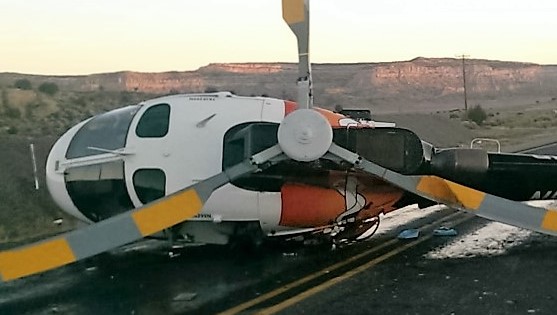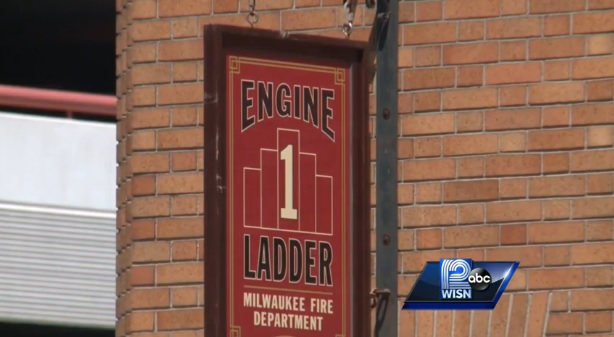Listen to Colorado State Patrol radio traffic during the last 15-minutes of the balloon chase
Click here for more radio traffic from Thursday’s events in Colorado
From KUSA-TV’s Jeffrey Wolf & Deborah Sherman:
The state made daring plans to rescue the boy believed to be floating free in an experimental balloon Thursday, but not everyone knew about the rescue plans or other help available to find the boy, 9Wants to Know has learned.
“I lost my temper a few times talking to some of my command staff about why the hell we didn’t have a helicopter in the air yet,” Larimer County Jim Alderden said.
The sheriff did not realize the Colorado National Guard had two helicopters, including a Black Hawk, available to him to search for 6-year-old Falcon Heene after law enforcement discovered he was not inside the space-like balloon when it landed Thursday.
While the balloon was still in flight, the state had come with various ideas to rescue Falcon.
One plan included flying the Black Hawk high above the balloon so that the rotor wash wouldn’t damage the balloon, then lower a Search and Rescue crew member in a basket to try to grab Falcon.
After the balloon landed, Alderden says his deputies were told it would take at least 12 hours to get help from the Colorado National Guard.
“You have to jump through a lot of hoops to get it and they were still trying to go through those hoops to get a National Guard helicopter in the area. It’s not as instant as one would think or hope,” Alderden said. “In any type of a search operation, my experience has been you really can’t count on the state to come in with any resources probably until the following day.”
Alderden then ordered his staff to try to lease a private helicopter so they could follow the flight path that the helium balloon had taken and look for the boy.
However, his staff was unable to rent one.
Next, the sheriff asked the media, including SKY9, for help.
“They contacted the news helicopters and two of the news helicopters said they would assist,” Alderden said.
What Alderden didn’t know is that the commander of the Colorado National Guard put two helicopters on stand-by minutes after the balloon escaped Richard Heene’s backyard in Fort Collins just in case local law enforcement needed the choppers.
One was an OH-58 Kiowa, or a four-seat helicopter, and the other was a Black Hawk.
Both choppers got up in the air, equipped with medical personnel and supplies, and were following the balloon minutes after getting the call from someone for help, according to the Guard.
After the balloon landed safely and the boy was not inside, the OH-58 stood by ready to help with search and rescue.
It’s not clear why that information didn’t get to Larimer County.
“I know from my perspective, the National Guard reacted very quickly,” Captain Michael Odgers, spokesman for the National Guard, said. “We were prepared, anticipated a request and we reacted within minutes.”
Odgers says they will review the incident to learn what happened.
“If that sheriff has some concerns, we’re going to work that out. We’re going to get all of the agencies that are involved and we’re going to ensure that anytime this reaction happens in the future, that it’s timely and see: where did we go wrong? If, in fact, we did,” Odgers said.
The Colorado Department of Emergency Management, along with the National Guard, also came up with multiple plans to save the boy. All of them were risky.
“There isn’t a single plan that we could’ve picked that didn’t have risk to the boy and risk to the air crew. Some of them significant risk,” Odgers said.
None of the rescue plans had to be implemented because the balloon deflated and landed safely in a field. The boy was not inside the balloon, but was found later to be hiding in his home’s attic.
The public was in the dark about the state’s response and rescue plans. Most media did not hear anything from state officials about any of their operations underway until after the event was over.
“We were overwhelmed with calls. You are not the only one that we were not able to get back to,” Odgers told 9NEWS.
In past emergencies, other agencies have been quick to talk to the public. For example, during the Columbine High School shootings, Steve Davis of the Lakewood Police Department says he conducted more than 134 interviews on-camera just in the first two days of the event.
Davis would not comment about Thursday’s scenario. However, he says in other incidents, it’s critical to keep people informed.
“You’ve got to fly by the seat of your pants on almost everything we do these days,” Davis said. “But it is important to have a framework in place so that a public information officer or an elected official can step up and tell you without a doubt, ‘Yes, we know what’s happened here, no I don’t have all the answers, but I can assure you that we have people scrambling to try to find out what it is, how to handle it and what we can do to keep you informed.'”
Davis says in the absence of information, rumors and speculation run wild and take on a life of their own.
“You’ve got to keep the information going and quite often. And that keeps people there and it keeps rumors squashed immediately,” Davis said.
When asked if someone from the state should have told the public what was happening, Odgers says it was an option they didn’t consider.
“From our public affairs office, we’re going to look at this and see how we reacted and how we could do this better,” Odgers said.
Despite some of the mishaps, emergency officials believe things went very well Thursday.
“This really honed our skills and we saw how quickly we can react to an unusual situation and try to come up with a plan to ensure they were getting the support they needed,” Brandon Williams, spokesman for the Colorado Department of Emergency Management, said.







